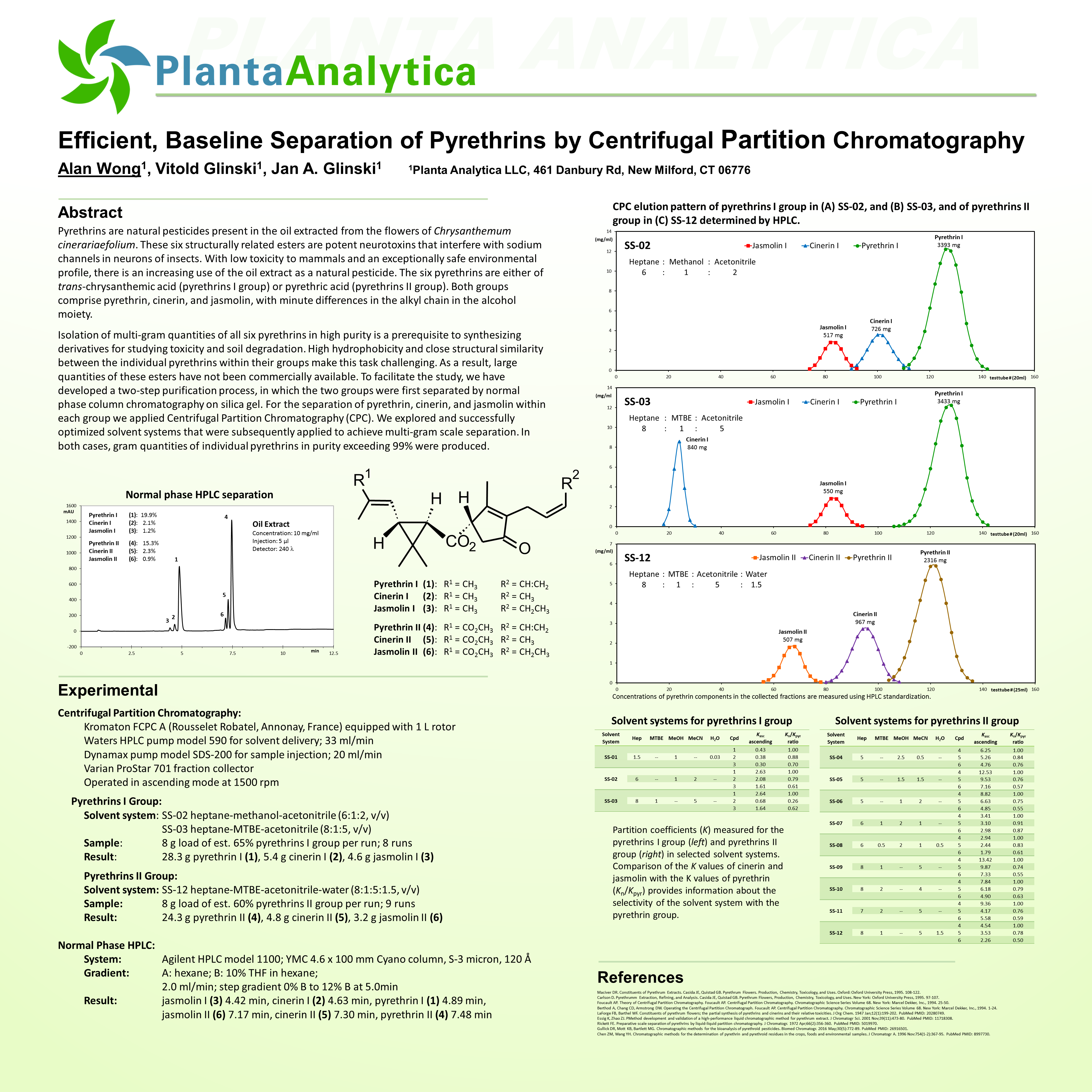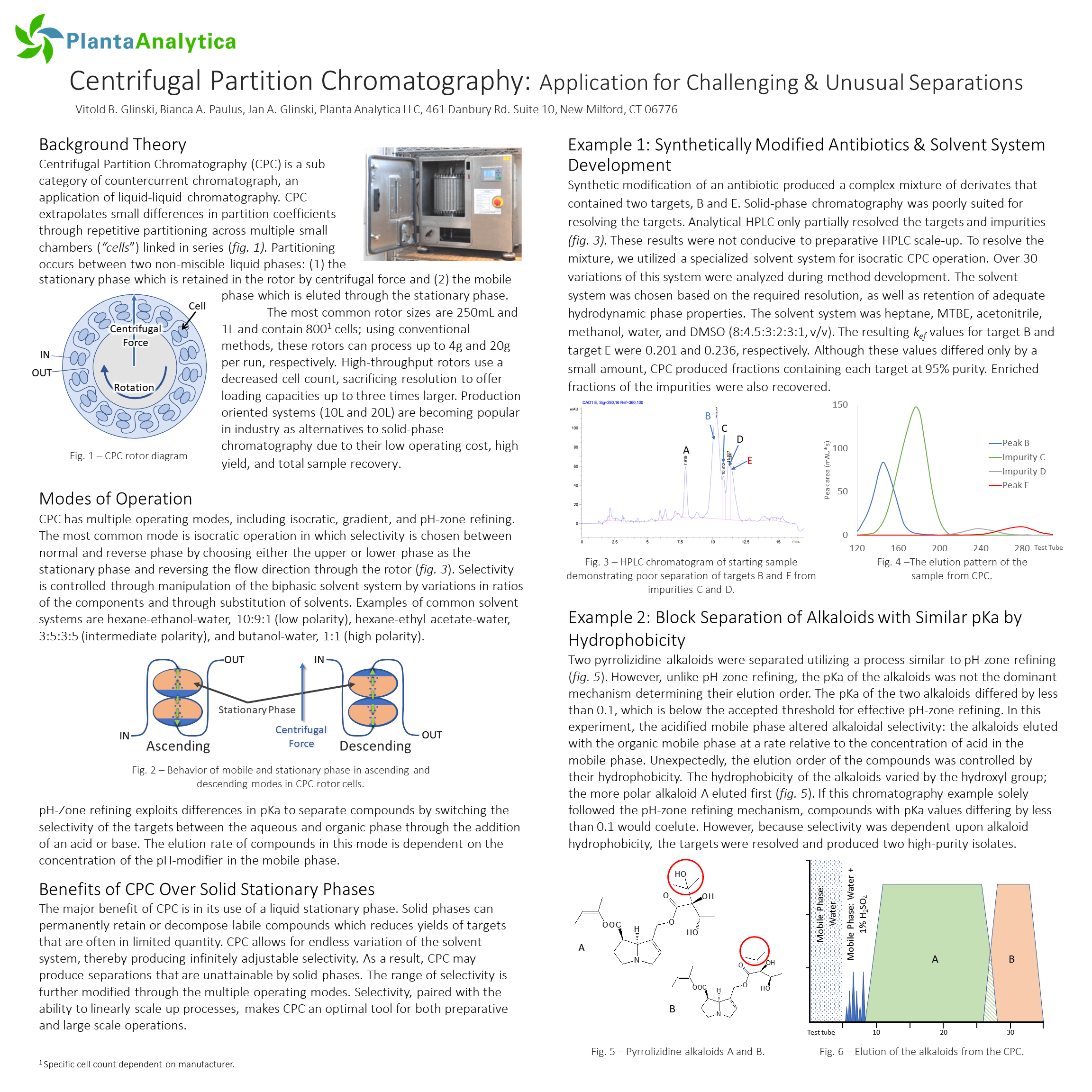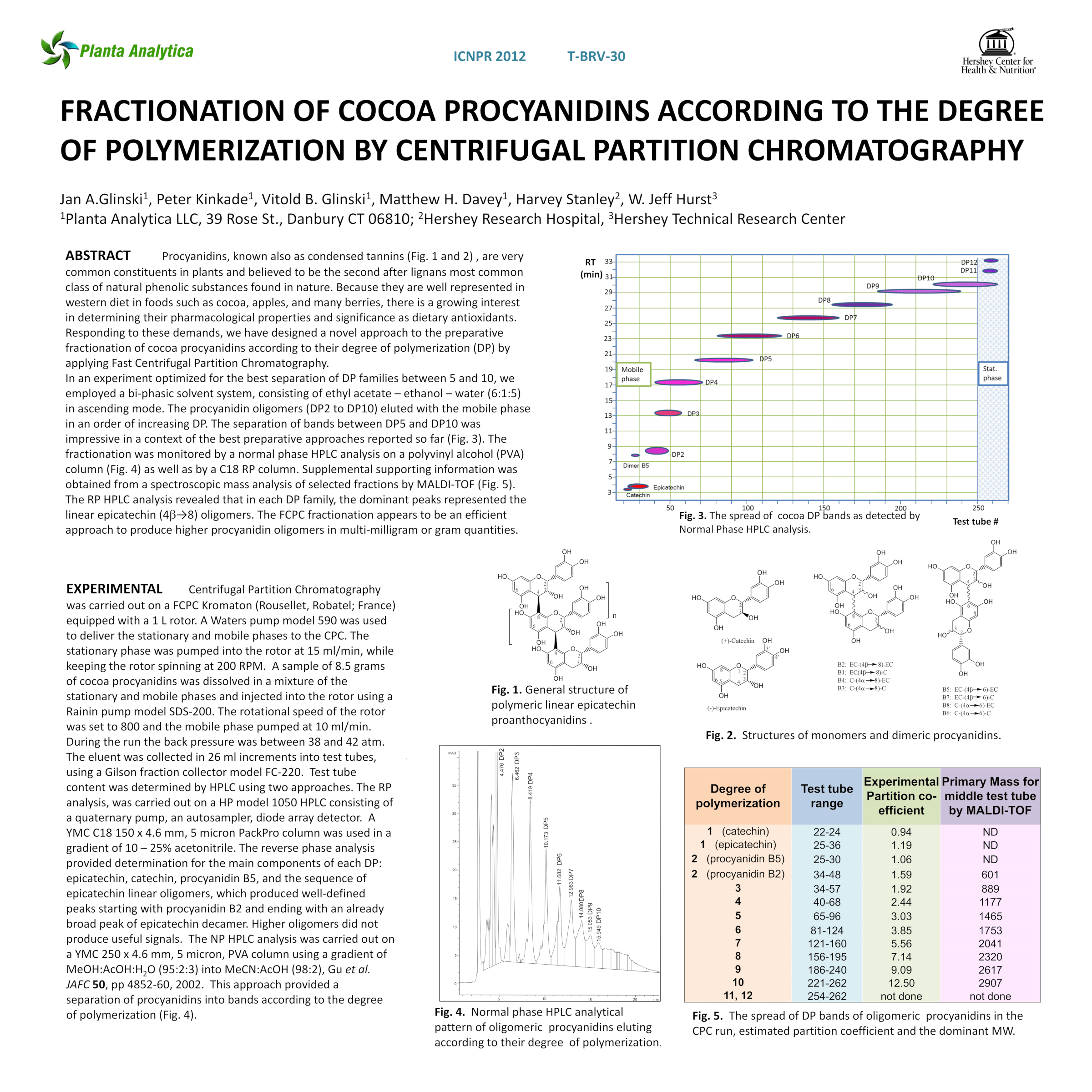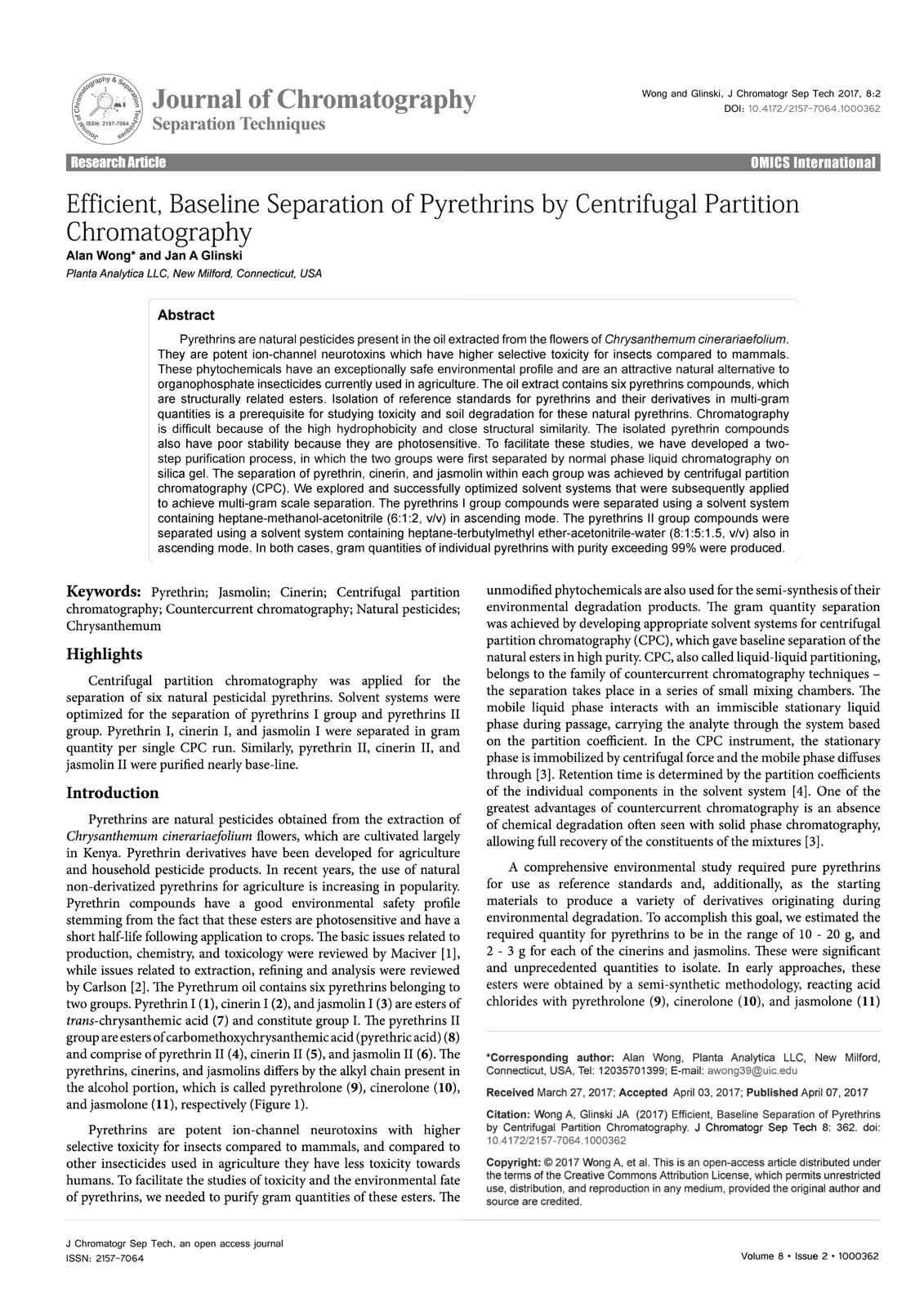TECHNOLOGY
CENTRIFUGAL PARTITION CHROMATOGRAPHY
Centrifugal partition chromatography (CPC) is a unique separation technique that relies on liquid-liquid partitioning for separating molecules. CPC is different from other liquid partition chromatography hardware because it does not use any solid stationary phases. As a result, CPC offers fantastic benefits over traditional chromatography techniques These benefits include the ability to easily adjust selectivity, adaptability from analytical-scale to industrial-scale usage. CPC is also a more environmentally friendly approach to purifications through a decrease in solvent usage.
Our laboratory has several Kromaton CPC units (Rousselet Robatel, France). The rotor design and column volume in preparative rotors offers excellent loading capacity and and resolution.
Benefits of Centrifugal Partition CHromatography
Method Scalability
A CPC method designed on an analytical-scale CPC can be linearly scaled to a 10-liter pilot-scale CPC without a loss of resolution. Oftentimes, the hydrodynamic properties allow for faster processing times and flowrates as the methods scale up.
Loading Capacity
CPC offers a higher loading capacity than many solid, stationary phases. For example, a CPC unit with a 1-liter rotor can handle up to fifty grams of a sample per run, equating to 25 grams of sample per liter.
Flexible Selectivity
In addition to a large range in selectivity based on solvent system composition, CPC can operate in different modes utilizing different chemical properties. For instance, pH-zone refining separates compounds based on pKa, making it well suited for ionic compounds.
How does it work?
Centrifugal partition chromatography is a technique based on the principles of liquid-liquid partitioning: two immiscible liquid phases form a biphasic solvent system. Therefore, the targets are isolated based on their differing partition coefficients within this two-phase system. One of the phases of the biphasic system is the stationary phase; it is loaded into the rotor and immobilized by the generated centrifugal force. The second phase acts as your mobile phase, eluting your product through the system.
Structurally similar compounds have similar partitioning coefficients. However, CPC magnifies these minor differences in partitioning through hundreds of cells connected in series, emulating consecutively repeating the partitioning hundreds of times. Optimization of separations is accomplished through experimentation with suitable solvent systems. Accordingly, solvent systems are adjusted to specific applications by changing solvents used and their relative ratios.
CPC provides many other modes of operation, thereby offering a breadth of approaches that can lead to even more useful selectivity. As a result, this versatility makes CPC one of the most powerful instruments in separation sciences.
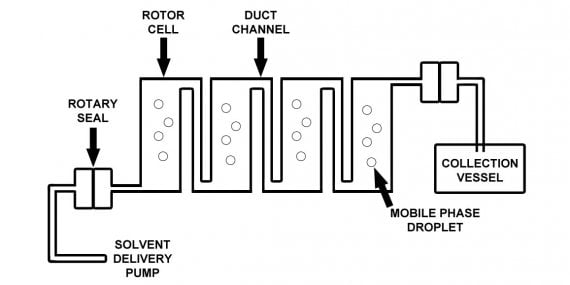
Technology Supplement
Efficient, baseline separation of pyrethrins by Centrifugal Partition Chromatography
ABSTRACT: Pyrethrins are natural pesticides present in the oil extracted from the flowers of Chrysanthemum cinerariaefolium. They are potent ion-channel neurotoxins which have higher selective toxicity for insects compared to mammals. These phytochemicals have an exceptionally safe environmental profile and are an attractive natural alternative to organophosphate insecticides currently used in agriculture. The oil extract contains six pyrethrins compounds, which are structurally related esters. Isolation of reference standards for pyrethrins and their derivatives in multi-gram quantities is a prerequisite for studying toxicity and soil degradation for these natural pyrethrins. Chromatography is difficult because of the high hydrophobicity and close structural similarity. The isolated pyrethrin compounds also have poor stability because they are photosensitive. To facilitate these studies, we have developed a twostep purification process, in which the two groups were first separated by normal phase liquid chromatography on silica gel.
Frequently Asked Questions
As far as the kind of solvents, it is really up to you and your experimentation! We regularly use solvent systems based on hexane : ethyl acetate : methanol: water. However, any mixture of immiscible solvents may be utilized. CPC utilizes significantly less solvent versus traditional solid phase chromatography.
Yes! We routinely use CPC for the separation of extremely polar targets. For example, a polar biphasic solvent system may simply be composed of butanol and water.
Yes! A solvent system composed of hexane : ethyl acetate : water will offer low polarity for those nonpolar separations.
Yes! One of the modes of CPC is pH-zone refining, which exploits differences in pKa to separate compounds by switching the selectivity of the targets between the stationary and mobile phases through the addition of an acid or base. The elution rate of compounds in this mode is dependent on the concentration of the pH-modifier in the mobile phase.
No. CPC is a liquid-liquid extraction technique; you never have to purchase, replace, or recondition any solid stationary phases. CPC also exhibits decreased solvent usage because of high resolution, unique selectivity, and a large loading capacity. This creates an economical, cost-effective approach to your separations!
100%! There is no irreversible adsorption or sample loss that is commonly observed with solid phases. There is also no degradation of labile compounds by the free silanols that are found in silica-based phases, thereby increasing yields and preserving precious material.


